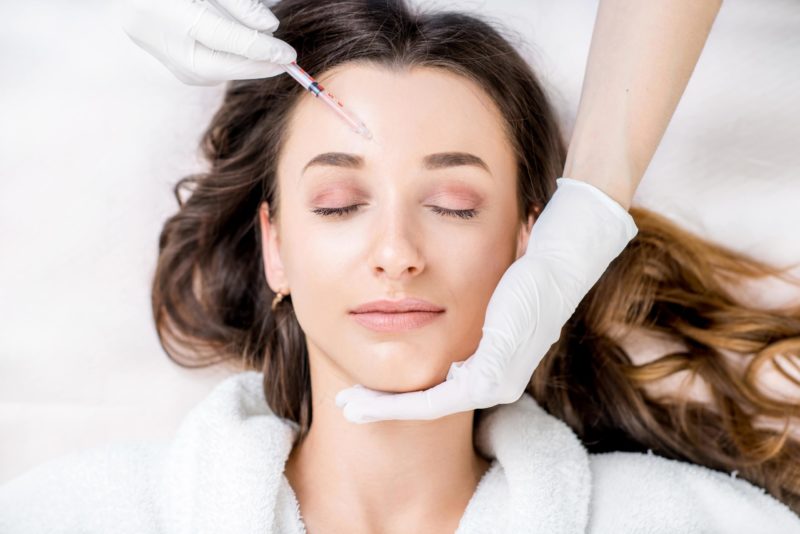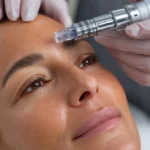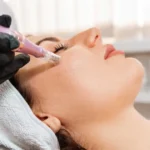Undoubtedly, our faces are on display more than ever because of the increasing popularity of technology. That explains why, year after year, more men and women seek cosmetic dermatology to rejuvenate their skin and improve their appearance.
Botox is one of the most popular anti-aging procedures. Botox may be for you if you’re searching for a quick and straightforward way to eliminate facial wrinkles and lines. Learn all there is to know about Botox therapy, including what kind of effects you can expect and how long they will stay.
What is Botox?
Botox Cosmetic is an injectable drug that may help with wrinkle reduction. The effects of Botox often last four to six months after the procedure. Botox is also used medically to alleviate headaches and ease neck spasms. When taken for medical purposes, it often only lasts two to three months before losing effectiveness.
How does Botox work?
Botox prevents the facial muscles from contracting by binding to specific nervous system structures when injected into the area. The muscles cannot contract, so they relax, making the surface smoother. The following are some of the few common problem areas that Botox can help with:
- Crows’ feet
- Forehead
- Glabella
- laugh lines
- Frown lines
- Frown lines
It’s important to remember that dynamic lines and wrinkles, or those brought on by repeated muscle contractions and facial expressions, can be effectively treated with Botox. For example, UV damage, sagging skin, loss of facial volume, and static wrinkles caused by aging are not candidates for Botox therapy.
How long will Botox take effect?
After the injection, the effects of Botox usually start to show up within a few days. But it could take up to two weeks for the full results to become apparent, so giving yourself enough time before getting a touch-up procedure is essential.
Is Botox safe?
Botox has the potential to be dangerous in large doses. However, Botox is incredibly safe and effective when administered correctly by a licensed physician and is FDA-authorized for treating facial lines and wrinkles.
After receiving a Botox injection, some people may have side effects, but these are often minor and pass quickly. The following are the side effects of Botox injections that occur most frequently:
- Redness around the injection site
- Bruising or swelling at the injection site
- The injection site may develop a temporary lump or bump.
- bleeding at the site of the injection
- droopy brows or eyelids
- Flu-like symptoms or a general unwell feeling
- Upset stomach
- Numbness
- Weakness in nearby muscles
Even though it is uncommon, some patients may develop an allergy after receiving a Botox injection. Overall, there aren’t many side effects from using Botox to address wrinkles and lines on the face.
How long does Botox last?
The long-lasting effects of Botox therapy are among the features that patients value the most. The usual Botox result starts to fade after around four months, and the effects typically last between three and six months. Naturally, the longevity of the outcomes will vary from patient to patient, as it does with any treatment. For instance, men often need Botox injections more frequently than women.
How can I prolong the effects of Botox?
Here are some tips to prolong the effects of your Botox treatment:
- Find a skilled Botox injector.
- After treatment, refrain from massaging your face for 24 to 48 hours.
- Avoid intense exercise or heat for 24 hours following therapy.
- Limit your exposure to the sun
- Wear caps, sunglasses, or both outside.
- Put on sunscreen
- Find a skincare regimen that works.
- Eat a healthy diet.
- Reduce your level of stress.
- Quit smoking.
What to expect during a Botox procedure?
Before undergoing therapy, a patient should consult with a doctor to go through the treatment plan and, more importantly, to disclose any medical conditions or prescriptions they are currently taking. At the next appointment, the physician uses a tiny needle to inject Botox into the targeted areas.
The area affected and the desired results will determine how many injections are necessary. The process is usually rapid. Some medical professionals give a follow-up visit to make sure the area is recovering properly. The doctor should advise measures for aftercare, which could include:
- avoid taking a nap for four hours following the procedure
- not using heat or massage on the area for 24 hours
- avoiding strenuous activity for 24 hours
- avoiding alcohol for 24 hours
These measures are meant to prevent Botox from spreading to other locations and stop it from thinning the blood. More research is necessary to understand the factors and create more efficient guidance.
Is it essential to wait between Botox treatments?
Patients frequently ask whether they should take a break between Botox treatments or if they may continue receiving them for an extended time. While the choice to continue receiving regular, consistent Botox injections is ultimately up to the patient, there are several benefits. Many patients who follow a consistent Botox schedule claim they need injections less often and use less Botox at each treatment. Similarly, regular Botox injections can prevent the development of dynamic lines and wrinkles because the muscles remain relaxed for an extended time.
Is Botox suitable for everyone?
Everyone has the right to look amazing, but a few things to consider before having any cosmetic surgery. It is essential to make sure treatment is safe for you. A Botox injection may hurt depending on the area injected and the patient’s pain tolerance. Anesthesia is not generally needed for the procedure, though. Botox is typically risk-free, but it usually has mild adverse effects. These problems could show immediately following the appointment or might take a few weeks. Botox should be avoided by some people, especially those who:
- pregnant
- breastfeeding
- under 18, except when medically necessary
- allergic to any of the solution’s contents
- had an allergic response to Botox
Bottomline
The name Botox is known as botulinum toxin. Although it is typically used for aesthetic purposes, it can also be used to treat some health problems.
The benefits of cosmetic Botox typically last between three and six months. However, factors such as the patient’s age, the injection site, and technique can affect this.
Botox may be used to treat medical conditions or address cosmetic concerns. However, several risks are associated, and they can also be pricey. More detailed information about the potential hazards to every patient can be obtained from a doctor. To learn more about Botox, you may Book an appointment at KOCO Medical Aesthetics and have our specialists discuss the right treatment plan for you.






